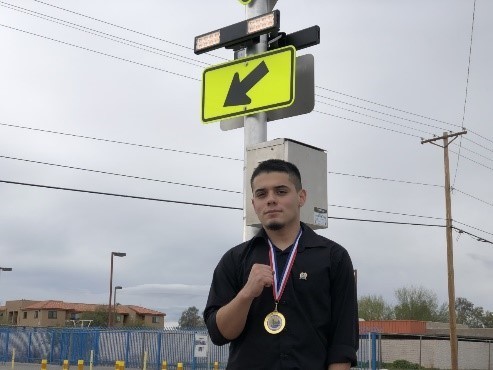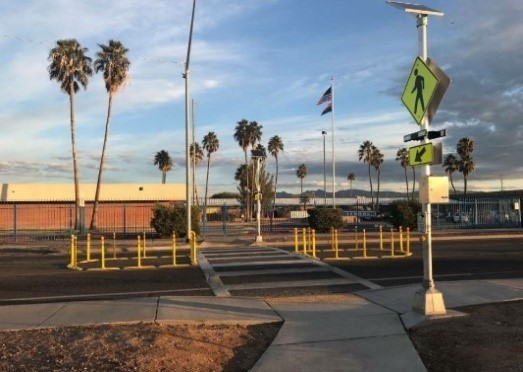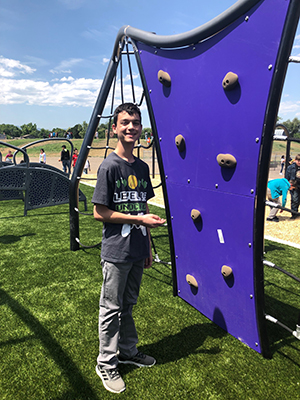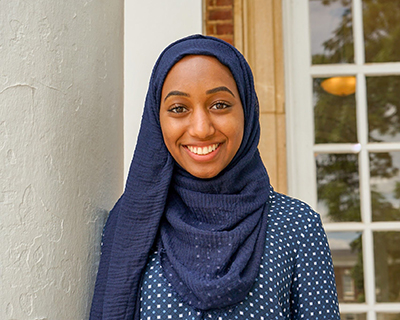I asked for your help in identifying students and practices that demonstrate these three components. I appreciate your many suggestions. Unfortunately, I was only able to highlight three of them, but, I think you
will agree, they are powerful examples.
Patrick Robles, Sunnyside High School, Tucson, AZ
Patrick’s life mantra: "¡Sí, se puede!" which translates to "Yes, we can!"
As student body president, Patrick had many successes, possibly the biggest of which was the major crosswalk renovation near his school. According to District Superintendent Steve Holmes, the school had been trying for
years to fix the problem, but red tape, and bureaucratic roadblocks kept getting in the way.
However, at the beginning of Patrick’s senior year, he took on this challenge. After reaching out to fellow students, teachers, the principal, and the superintendent, Patrick got the go ahead to approach the Tucson
City Council. By the end of January, the Tucson Department of Transportation had installed a new Rectangular Rapid Flashing Beacon (RRFB) crosswalk, a new technology being piloted in another Tucson location.
When I asked why he thought he had succeeded when adults had failed at the same project, Patrick said, “Young people bring a unique perspective and tone to the conversation.”
I also asked him what skills and competencies he developed through the process and if he thought other students could benefit from similar experiences. His response: “I am now able to be in a conversation with adults
and get my point across. My writing has improved, and I also improved my empathy skills.”
“When you are in student government, you need a great deal of agency. We need to put that agency in the classroom. More agency in the curriculum will help students build a sense of ownership in their work, in the classroom, and
in the school.”
Patrick is a great example of students as problem solvers.


Andrew Ellis, North Arvada Middle School, Arvada, CO
Erin Fichtel teaches a STEAM elective at North Arvada Middle School. The emphasis of the class is self-directed learning. Students are assigned to work on some aspect of the school garden. However, Andrew Ellis wanted
to focus on something else: the schools lack of playground space. His teacher gave him the “thumbs up.”
During this well scaffolded course, Andrew and the rest of the students spent the first six weeks of the semester doing an analysis of their potential project, communicating with students, teachers,
and administrators; and designing their project, the success criteria, and how to manage their time and budget.
Andrew and his team noticed students were bored during lunch recess and needed more options beyond just sitting and talking to friends. While researching a playground grant, Andrew realized the
school must partner with the city government to be eligible. So, he worked to convince city council to apply for the grant on the school’s behalf. Working alongside his fellow students, Andrew took the lead
on completing the grant application, gaining student consensus, and designing a Ninja-Warrior-inspired playground design. Long story short, the school won the $110,000 grant from GOCO (Great Outdoors Colorado) and the
school and district added another $70,000. That’s right, Andrew, a seventh grader, raised $180,000 for his school and community.
The obstacle course was installed this August.
Andrew’s teacher, Erin, explained that this project transformed Andrew, who had been an average student in reading and writing.
Not only did Andrew learn important researching, writing, negotiating, and organizational skills, he also developed a greater sense of confidence from a class project that allowed him to excel and make a much-needed
difference for his school.
“It makes me feel good to help other people. Now that my sister is in the school, she will get to use it. That’s pretty cool,” Andrew explained proudly.
Andrew’s great story is a stellar example of what can happen in learning environments that focus on self-direction.

Rajaah Alagib, Albemarle High School, Charlottesville, VA
In the period following the violent confrontations in Charlottesville, Rajaah’s school district was reviewing its dress code policy. It was controversial because the district had to make the difficult decision as
to whether the policy should explicitly ban confederate imagery.
The school district made two significant decisions about how to proceed. First, it broadened the inquiry to develop an “anti-racism” policy for the district. Then, it decided to ask a
“student-only” panel to develop the policy. Rajaah was one of the students selected to serve on this panel.
I asked Rajaah what she thought about having only students on the task force. She said it was “better than having adults that aren’t in the school or the classroom.”
Rajaah and the rest of the students started working on the policy before school started and did in-depth data work before they entered an intensive interview stage. They completed a draft policy in late 2018, and the new
policy was passed by the school board in February of this year.
The anti-racism policy is a general policy framework that will help push forward a path for more specific policies. Rajaah describes it as a “first-step” and that she was confident the policy would continue
to receive adequate attention from the district and the school board. She also proudly explained that the policy creates an ongoing student review board to review the new data, and believes the
students will keep a continuing focus on the racism issues.
Based on the success of this panel, the district is now establishing a new student policy panel on homework policy and its relationship to mental health challenges students in the district face.
Rajaah noted that she benefited personally from her intense involvement in this work. Her public speaking and presentation skills, as well as her networking skills grew through this project. It also
advanced her personal interest in public policy. She also shared that the younger students in the group dramatically improved their communication and confidence skills throughout the six-month experience.

When I asked Rajaah what lessons she hoped the district might take away from this project, she suggested that all classes should include longer term projects. “If teachers embraced community-based projects,
it would help students obtain a wide range of skills that they need.”
If you want to hear more about this great experience and are a member of the Edleader21 network, please join us at our Annual Event where Rajaah will be one of our keynote speakers on October
2 in Houston.
Rajaah’s story exemplifies what happens when we give students significant responsibility in their school and community.